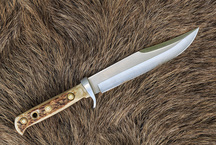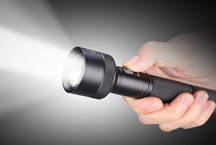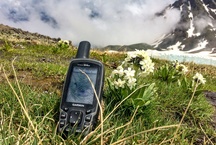8 best walkie talkies


Radio will not lose their popularity for a very long time. Of course, they can easily replace mobile phones and smartphones. But to talk with their help requires money and, importantly, located near the tower of cellular communication. And the radio all these conventions simply do not need! That is why the radio is used by experienced hunters and fishermen, not to mention the police and military.
In this article we tried to select a dozen of the best radios, popular in 2018 in the market. Any of the models considered by us is capable of coping with the tasks for which it is designed.
Top best portable radios 2018
| Category | A place | Name | Rating | Price |
|---|---|---|---|---|
| The best walkie-talkie for hunting and fishing | 1 | Yaesu VX-6R | 9.8 / 10 | 18 265 |
| 2 | ICOM IC-F16 | 9.5 / 10 | 12 078 | |
| 3 | Vertex VX-261 | 9.4 / 10 | 11 990 | |
| 4 | VECTOR VT-80 ST | 9.0 / 10 | 6 700 | |
| The best professional radio | 1 | Motorola DP4801 | 10 / 10 | 57 352 |
| The best budget (inexpensive) radio | 1 | Baofeng UV-82 | 9.7 / 10 | 1 890 |
| The best walkie-talkie with extreme protection | 1 | Motorola TLKR-T80 Extreme | 9.8 / 10 | 6 990 |
| 2 | MIDLAND GXT-1050 | 9.1 / 10 | 5 852 |
The best walkie-talkie for hunting and fishing
|
18 265
Opens our ranking of the best radio for hunting and fishing Yaesu VX-6R. The robust magnesium alloy case is supplemented with good moisture protection: the radio complies with the requirements of the JIS-7 standard, and withstands immersion to a meter depth for half an hour. We do not urge you to drown her on the hunt or to beat against the trees, but with these “tortures” Yaesu VX-6R will cope with dignity. In addition, her body is compact and does not take up much space, which is also important during a hunt. Transmission is carried out with a maximum power of 5 watts, it is possible to reduce it to 2.5, 1 or 0.3 watts. So, if necessary, it is possible to “strangle” it, ensuring saving of charge, and if necessary, “shouting at all the money”, although the current consumption will already be considerable - up to 1.8 A. The battery here, fortunately, is modern - lithium-ionic at 1400 milliampere-hours, and this “baby” is capable of arguing with the “bricks”, which use outdated nickel-metal-hydride and nickel-cadmium batteries, in terms of operating time, and the charging speed is definitely several times faster. Hunting in our latitudes is primarily a forest, which means that in the transmitter we are interested in the longest waves (LPD and PMR in cheap radios are not the best solution because of the strong attenuation of the signal among the trees). Well, Yaesu can work at frequencies of 140-174 MHz "out of the box", and after fine-tuning improvements on amateur radio sites (that is, simply swapping jumpers on the board), it can be transmitted in other bands as well. Of course, in Russia it is illegal a little less than completely, but ... And the most "tasty" here is a receiver that is operable in the band from 500 kHz to 998.99 MHz. The path is an “honest” superheterodyne, working with double frequency conversion on AM (amplitude modulation) and NFM (narrowband frequency modulation), when choosing modulation WFM (wideband frequency modulation) triple conversion is enabled. And again the characteristics are perfectly suitable for the forest - the maximum sensitivity (0.16 µV!) The receiver has at frequencies of 140-150 MHz. Main advantages:
Minuses:
|
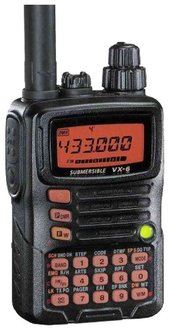 9.8 / 10
Rating
Reviews
The best in terms of all qualities of a hunting radio is light, compact, long-range. |
|
12 078
Multifunctionality is good, but not all hunters and fishermen are “sick” by radio communication at least at the amateur level.If you only need quality communication for yourself, and the words “modulation”, “standing wave ratio” or “selectivity” seem to be Chinese literacy, then this radio from Icom, vividly embodying the principle of “nothing extra”, will definitely be a good choice. The frequency range here is only one - VHF, 136-174 MHz. That is exactly what is necessary for the forest. The output power is 5 W, it can be reduced to 1 W without the need for "long range". The number of programmable channels by the standards of clever “hodiboltaek” is small - only 16, but tell me honestly: will you use even so much while hunting? That is the point. But in its simplicity of use it is difficult to argue with “Icom”. The standard battery in the Russian version has a capacity of 1150 mAh, and the manufacturer also offers optional enlarged batteries for 2000 mAh. Here, the absence of extra “frills” is also a plus - the radio autonomy is decent. However, it should be borne in mind that the case here, although with a metal chassis, is plastic, and the degree of water protection is only IPX4. Therefore, in the “indestructibility” competition, Icom cannot claim a pedestal, and it will require some caution for hunting in the swamps (the author remembered how he pulled out mud from the backside during the spring hunt, and sighed sadly). Main advantages:
Minuses:
|
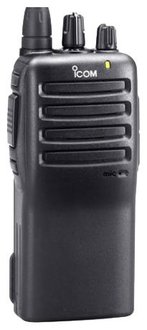 9.5 / 10
Rating
Reviews
The radio is correct: not a single gram, but everything that is needed works like a clock. In the forest, confidently running for several kilometers. |
|
11 990
Another representative of the class "hodiboltaek", this walkie-talkie can be safely entrusted to the time of the hunt for a comrade who combines the love of torsion of handles and pressing buttons with a complete lack of understanding of the result of their actions. There is simply no extra controls here; switching 16 channels is a simple knob. The VHF operating range is 136-174 MHz, the UHF is 403-470 MHz. However, we have already mentioned that for the hunter the second range is not particularly relevant, but if the team gathered on the hunt for a full "rabble" of radios, then the UHF can be useful. At the same time, the transmitter “blows” up to 5 W into the antenna, and the standard battery is quite good in capacity (1380 mA * h): you can confidently talk at a decent distance without fear for a quick charge. If you buy a walkie-talkie with an optional 2300 mAh battery, then it will be all the more bold to go hunting. Despite the apparent simplicity, it provides for quite convenient functions that are not conspicuous. For example, you will receive warnings that go out of range with confident comrades. They do not have to wear the same "Vortex", any radio with the ARTS transponder will do. The scanner has also been improved, although it is still not very convenient due to the minimalism of the control and management bodies. There is, however, the radio and a small miscalculation. In an effort to combine compactness with a decent battery capacity, the developers simply did not leave a space behind the clip on the case - it is attached to the battery itself. Main advantages:
Minuses:
|
9.4 / 10
Rating
Reviews
Serious professional radio, the battery lasts a long time, the connection quality. Scored channel frequencies and problems do not know. |
|
6 700
The main advantage of this radio is definitely the “long range”: the power here is no less than 10 watts! However, alas, only in the UHF band (400-470 MHz), VHF is not provided here. And it's a pity - then, in terms of the transmission distance in the forest, she would definitely have few competitors. With such power, the power consumption is considerable, and the corresponding battery here is 4200 mAh.Running time on a single charge is not bad, and in the mode of limiting the output power, the walkie-talkie becomes the record holder for autonomy. However, we must bear in mind that this walkie-talkie is noticeably lower in class than the leaders of our rating - although the case is made of polycarbonate, I would like to add moisture resistance to durability. Both the transmitter and the receiver are not as “licked” as in high-end portable radio stations, the sensitivity and selectivity are medium. Therefore, the power seems to be high, but where the owners of Motorol or Yaesu still hear you, you will not understand their voices. Main advantages:
Minuses:
|
9.0 / 10
Rating
Reviews
We take most often for long off-road pokatushki, communication range and autonomy that is necessary! |
The best professional radio
|
57 352
The Motorola's DP4XXX line has always been quite brutal in appearance, pleasing the eye of military-style lovers, but here the design was slightly “revived” by an LCD display and a functional keyboard, at the same time adding usability. The case meets the requirements of the standard MIL-STD-810: “military” is not only in appearance, the degree of moisture protection - IPX7. The output power in the VHF / UHF bands is up to 5 W, the number of programmable channels is 1000. The standard battery is better in capacity than many “amplified”: 2250 mAh, so the autonomy of the DP4801 is a matter of respect. In addition to the standard for professional walkie-talkie functional, the DP4801 also supports the transmission of sound and data via the Bluetooth channel, and is “able” to receive the signal of GPS and GLONASS satellites. This is not superfluous given that on the basis of a set of such radios, you can build a complete network where the manager can track the coordinates of individual groups and has priority in communication, when at any moment you can distribute important information even in busy channels. ATEX certified, which means that it can work safely in a potentially explosive atmosphere. So where you see such walkie-talkies for sure, it’s from the gas industry and oil industry workers - they do not even have the money to buy such equipment, and the functionality of the walkie-talkie is just “in topic”. Perhaps it is worth stopping with the enumeration of functions, otherwise either ordinary readers will get tired of reading, or experts will accuse us of deliberately distorting the parameters and terminology in favor of the “readability” of the text. Let's just say - in terms of functionality, reliability and quality of communication with the DP4801 it's really hard to argue. Main advantages:
Minuses:
|
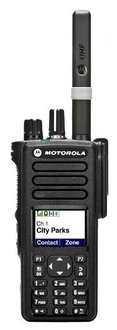 10 / 10
Rating
Reviews
The best professional radio from the ones I've used: where it is about the interaction of dozens of people "in the field", it works fine. |
The best budget (inexpensive) radio
|
1 890
At one time, Baofeng UV-5R became a truly “people's” walkie-talkie, standing at a low cost, and in fact being a clone of an old-fashioned but decent Kenwood. However, time does not stand still, and UV-82 can argue with the "old man" in popularity. In fact, this is the same UV-5R, but it has been modified both circuit-wise and in ergonomics. A single PTT button is replaced by a “rocker”, allowing you to work arbitrarily with two pre-defined channels without having to switch them back and forth, as was the case with UV-5R. Dual PTT mode is implemented on the standard headset. Button 0 on the numeric keypad has finally “moved” to its usual place. Instead of a fully plastic case, plastic with a metal chassis. The headset jack (still "Kenwood") better fixes the plugs. True, switching between frequency and channel modes of operation is not so fast now, but it can hardly be called a big minus - is it often necessary? Of course, it didn’t do without the traditional “Chinese” - the claimed 2800 mA * h capacity of a regular battery is actually more modest, and the 8 watts of power of the UV-82 plus model is doubtful.However, in comparison with the UV-5R, the radius of confident communication under the same conditions is definitely greater - thanks to the improved radio path. Main advantages:
Minuses:
|
 9.7 / 10
Rating
Reviews
The radio is definitely more convenient than the old UV-5R, and for the price is the same. So change the full-time antenna on Nagoya and go! |
The best walkie-talkie with extreme protection
|
A set of two radio sets Motorola TLKR-T80 Extreme is sold at a not the lowest price. But the creators are not in vain asking for such money. With standard specifications, portable radio stations are striking in their "vitality." You can drop them on a hard surface, drown in a small river - such actions should not cause malfunctions. Also, radios are able to boast a bright yellow color, thanks to which they can be easily found on the ground or in a snowdrift. The transmitter power is 0.5 W - this is the maximum rate for PMR radio stations, at which they do not need to be registered with the relevant authorities of our country. Therefore, do not blame the creators of the fact that the range of these radios is not too large.
Main advantages:
Minuses:
|
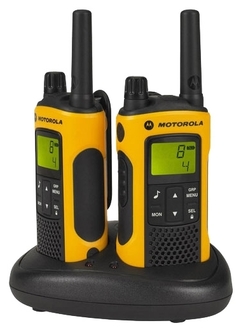 9.8 / 10
Rating
|
|
5 852
The MIDLAND GXT-1050 set of radios was supposedly made for winter hunting - this is what the hull coloring says. But in fact, such radio stations are used by builders and other workers. Under hunting conditions, the transmitter power may not be enough, which is only 0.01 watts. Although this is the only serious claim to this kit. The rest of the radio please. They work stably in the LPD range, they have a monochrome orange backlit display, and connecting a headset will help free your hands. We should not forget about the possibility of coding through the standards CTCSS and DCS.
Main advantages:
Minuses:
|
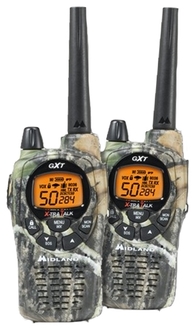 9.1 / 10
Rating
|
How to choose a walkie-talkie?
Let's start with a legal educational program - in our country the possibilities for legal work without registration and licenses are not so great Only LPD (69 channels from 433.075 MHz to 434.775 MHz in 25 kHz steps) and PMR (446-446.1 MHz) bands are allowed, so even with serious power limitations: no more than 0.01 and 0.5 W respectively. Compared with the shortwave radios of the CB-range, which do not require recording up to 4 W of power, this seems to be a miser. However, alas, you will not take a sibish into the forest: the antenna for 27 MHz will have more or less effective dimensions for a portable radio station (even a quarter-wave radiator - under three meters). Remember the "rods" on taxi drivers' cars - will you go with such an antenna on a hike? So for walkie-talkers, only ultra-short waves remain.
The radius of communication in the "legitimate" radios is not enough, so it is not surprising that the nominal operating power of popular models is several times higher, and the frequency ranges with the allowed ones do not match. Fortunately, the times when the radio control was really effective were already passed along with the stations jammed on Voice of America, so the only way to really get problems using a powerful radio is to get into the reserved frequency ranges of airports, law enforcement agencies and so on. Further.
However, the communication range primarily determines not the power, but the quality of the radio path as a whole: the accuracy of the carrier frequency, the selectivity of the receiver, and so on. We will not delve into the theory, just advise to trust the relevant forums, there hackers have already managed to collect lists of models that clearly deserve attention.
The intended use of the radio will determine the requirements for its design. For example, if you intend to use the radio at short distances (building, guarding an object, and so on), then the usual LPD / PMR radio is enough, inexpensive and simple. On a hunt, in a trophy-raid, communication between tourist groups will require at least splash protection, and better, full water protection, increased power, and hence a capacious battery. For large-scale airsoft games, it will not only hurt the ability to quickly switch channels, but also tone coding (some teams even use scramblers - there is more military entourage and rivals do not overhear plans).
And a little more physics: for each frequency range there is a minimum size of objects surrounding the walkie-talkie, which begin to noticeably affect the passage of radio waves. For LPD and PMR radios, even trees are already becoming a tangible limiting factor, therefore, although frequencies with a longer wavelength (VHF) are not allowed to work without a license, we are highly desirable in the list of characteristics of the radio.
